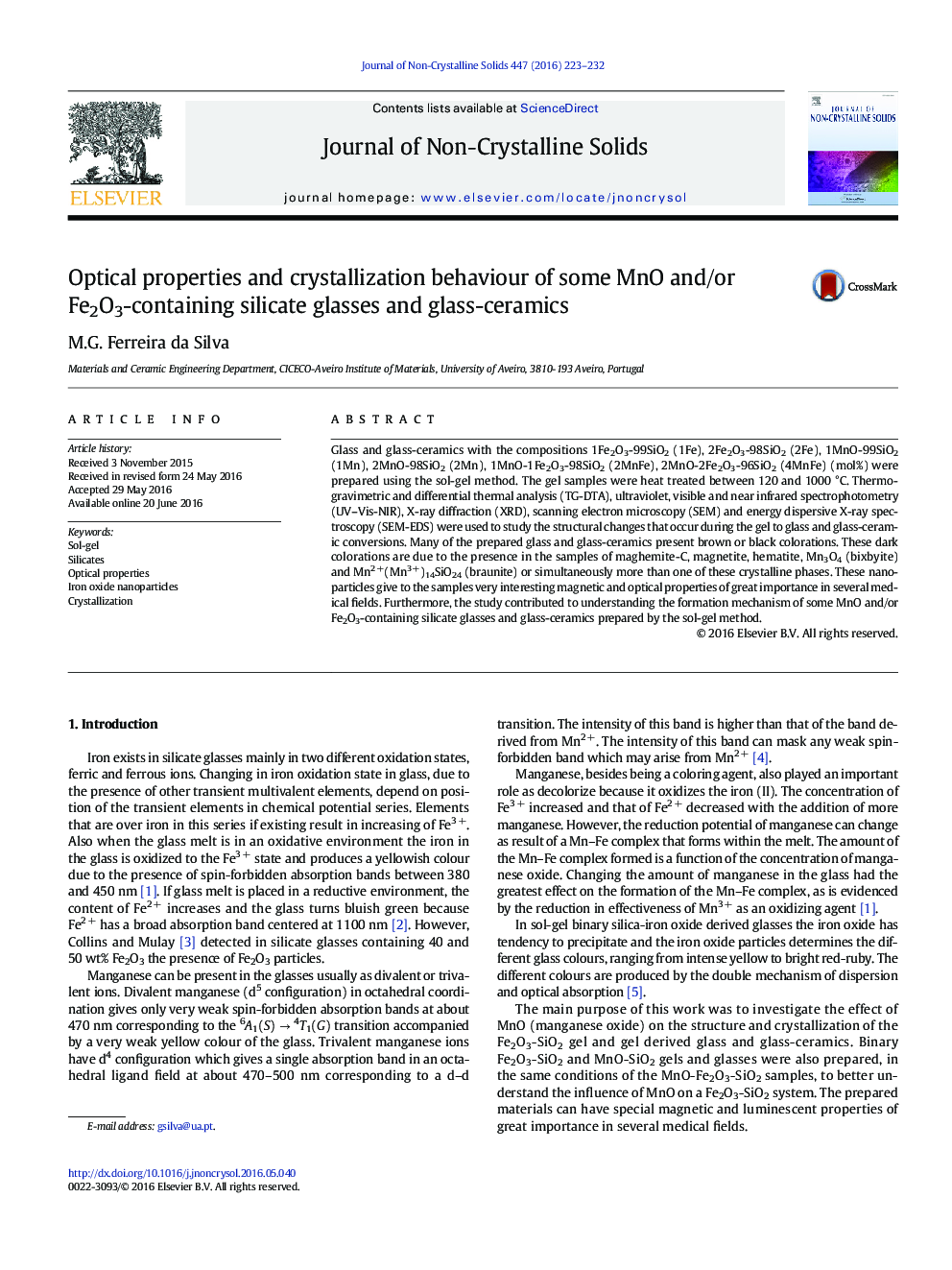| Article ID | Journal | Published Year | Pages | File Type |
|---|---|---|---|---|
| 1480169 | Journal of Non-Crystalline Solids | 2016 | 10 Pages |
•Silicate gels, glasses and glass-ceramics with different iron oxide and manganese oxide content were prepared using the sol-gel method.•Iron oxide and manganese oxide are inserted in the silicate matrix as nanoparticles.•The iron oxide particles have hydrophilic properties.•In some samples was detected the presence of maghmite-C or magnetite nanoparticles that have special magnetic properties.
Glass and glass-ceramics with the compositions 1Fe2O3-99SiO2 (1Fe), 2Fe2O3-98SiO2 (2Fe), 1MnO-99SiO2 (1Mn), 2MnO-98SiO2 (2Mn), 1MnO-1Fe2O3-98SiO2 (2MnFe), 2MnO-2Fe2O3-96SiO2 (4MnFe) (mol%) were prepared using the sol-gel method. The gel samples were heat treated between 120 and 1000 °C. Thermogravimetric and differential thermal analysis (TG-DTA), ultraviolet, visible and near infrared spectrophotometry (UV–Vis-NIR), X-ray diffraction (XRD), scanning electron microscopy (SEM) and energy dispersive X-ray spectroscopy (SEM-EDS) were used to study the structural changes that occur during the gel to glass and glass-ceramic conversions. Many of the prepared glass and glass-ceramics present brown or black colorations. These dark colorations are due to the presence in the samples of maghemite-C, magnetite, hematite, Mn3O4 (bixbyite) and Mn2 +(Mn3 +)14SiO24 (braunite) or simultaneously more than one of these crystalline phases. These nanoparticles give to the samples very interesting magnetic and optical properties of great importance in several medical fields. Furthermore, the study contributed to understanding the formation mechanism of some MnO and/or Fe2O3-containing silicate glasses and glass-ceramics prepared by the sol-gel method.
